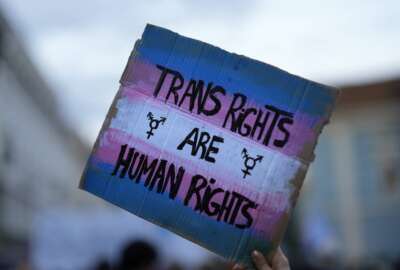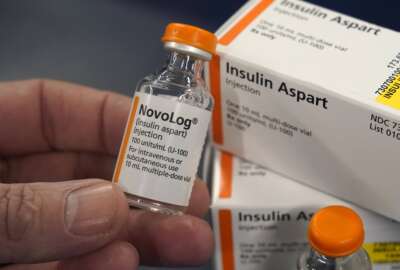LGBTQ+ and single FEHB participants face ‘unnecessary barriers’ under OPM’s definition of infertility
A group of Democrat lawmakers urges OPM to immediately update its definition of infertility, ahead of new requirements for FEHB carriers in 2024.
LGBTQ+ individuals, as well as single individuals, enrolled in the Federal Employees Health Benefits (FEHB) program have “unnecessary barriers and costs” to accessing the program’s full range of health benefits, a group of House Democrats has said.
The Office of Personnel Management’s working definition of “infertility” in FEHB program guidance, dating back to 2015, doesn’t account for a broad enough range of enrollees who may be looking to get coverage for assisted reproductive technology (ART) as part of their health benefits package.
The Congress members are urging OPM to immediately change the definition, which they said is outdated and lacks inclusivity.
“By adopting an inclusive definition that recognizes the full spectrum of reproductive needs and removing unnecessary barriers to coverage, we can ensure that all federal employees, regardless of their sexual orientation, gender identity or marital status, have access to the comprehensive reproductive health care they deserve,” the 32 lawmakers, led by Rep. Gerry Connolly (D-Va.), said in a letter to OPM Director Kiran Ahuja earlier this month.
In 2023 guidance for FEHB carriers, OPM referenced its 2015 policy, which states that FEHB plans offering infertility benefits “must ensure that benefit definitions and coverage descriptions use terms that are relationship neutral.”
But the definition of infertility fails to account for same-sex couples and single individuals, the lawmakers said.
OPM’s current technical guidance defines infertility for women ages 35 and younger as being unable to conceive for one year. For women over age 35, that time frame is six months. The guidance also defines infertility for single women as the inability to conceive after six cycles of artificial insemination or intrauterine insemination.
These timelines determine when enrollees would be able to start receiving coverage for infertility-related procedures and medications. Under the current infertility definitions, participants would not receive any coverage under FEHB prior to going through six unsuccessful cycles of artificial insemination, as they wouldn’t yet technically meet the program’s requirements for infertility.
The six-cycle requirement to reach the definition of infertility “is both arbitrary and unnecessarily restrictive,” the lawmakers said. “The number of cycles required in the definition does not take into account an infertility diagnosis that may occur when a patient is evaluated, leading to inconsistent and unequal coverage for individuals seeking alternative methods of conception. Furthermore, this policy creates unnecessary barriers and costs for LGBTQ people by excluding consideration of at-home inseminations.”
And the barrier to coverage can spur large out-of-pocket costs. Intrauterine insemination costs between $500 to $4,000 per cycle — not including the cost of the donor sperm.
“By limiting coverage to these individuals only after six cycles of insemination with donor sperm, we are effectively denying them access to necessary fertility treatments, placing an undue burden on their path to parenthood,” the lawmakers said.
The call from lawmakers is the latest in a line of several letters addressed to OPM in the last couple of years, urging the agency to update and expand FEHB carriers’ coverage of infertility treatments, the costs of which are often “prohibitively expensive.”
OPM did not respond to a request for comment on plans to update the definition of infertility for FEHB.
New ART coverage requirements for FEHB carriers coming next year
But in the same vein, the lawmakers also lauded OPM for its plans to expand coverage of fertility-related health care, including assisted reproduction, for FEHB participants.
Starting in 2024, OPM is requiring all FEHB carriers, at a minimum, to cover two forms of artificial insemination and the drugs associated with those artificial insemination procedures, as well as at least three cycles of drugs related to in vitro fertilization (IVF) annually.
The new requirements from OPM are a step in the right direction, said Kevin Moss, editor of Consumers’ Checkbook Guide to Health Plans for Federal Employees. But it’s certainly not the end of the road.
“We’re encouraged that OPM is mandating increased coverage for plan year 2024 but recognize that more work is needed to reduce out-of-pocket costs for families in need of fertility services,” Moss told Federal News Network.
Specifically, OPM’s new requirement leaves gaps in coverage for ART procedures, most notably IVF procedures, as well as the cost of donor sperm, donor eggs and cryopreservation.
“These are all costs associated with fertility services that families will still have to pay entirely out of pocket for,” Moss said in an interview on Fed Life in March, when the OPM carrier letter setting the new requirements was first published.
The procedures come with a high price tag, too. The cost of one IVF cycle can range anywhere from $15,000 to $30,000. Fertility drugs account for only about 35% of that total cost.
“Services such as intracytoplasmic sperm injection (ICSI), preimplantation genetic testing, cryopreservation of embryos and others are not required by every individual undergoing IVF, but they can significantly increase the cost of a single cycle,” OPM said in a letter to FEHB carriers in June. “Injectable medications usually cost $3,000 to $6,000 per cycle.”
For now, Moss recommended using a flexible spending account to help offset some of the larger expenses.
“We’re in a ‘wait-and-see’ mode with respect to fertility benefits,” Moss said. “Besides the mandatory benefits, we’ll be looking to see if any FEHB plans provide additional fertility benefits for plan year 2024, as OPM has encouraged.”
In the meantime, the members of Congress urged OPM to work with stakeholders to immediately update the definition of infertility in FEHB’s program guidance, prior to the new requirements taking effect in 2024.
Copyright © 2024 Federal News Network. All rights reserved. This website is not intended for users located within the European Economic Area.
Drew Friedman is a workforce, pay and benefits reporter for Federal News Network.
Follow @dfriedmanWFED






